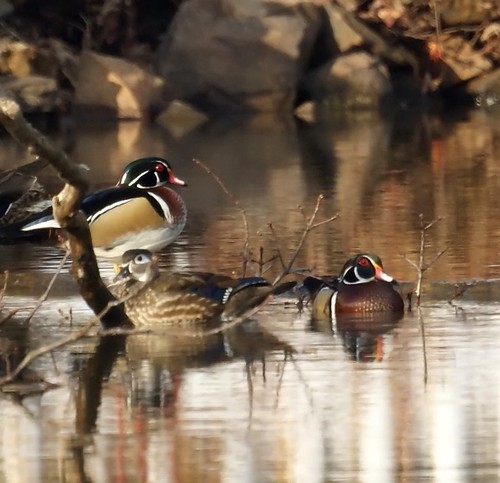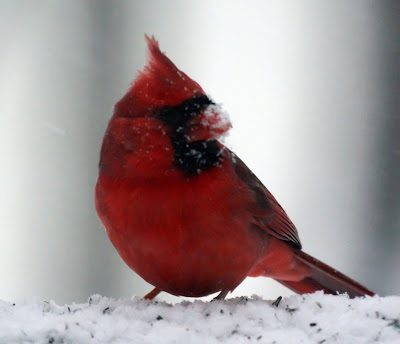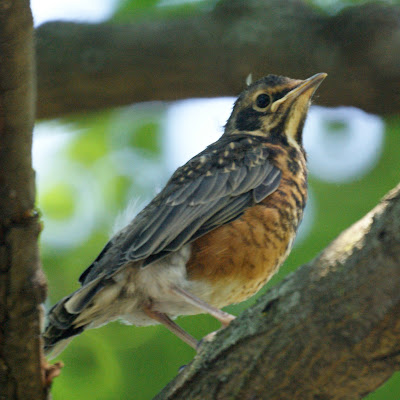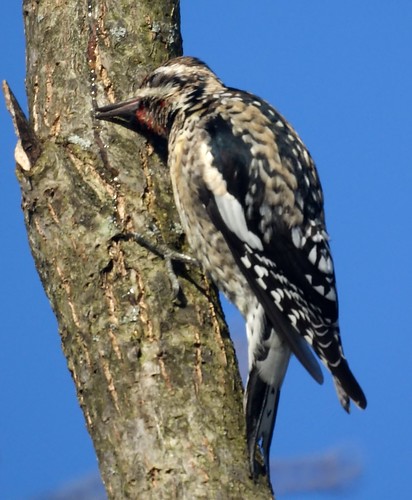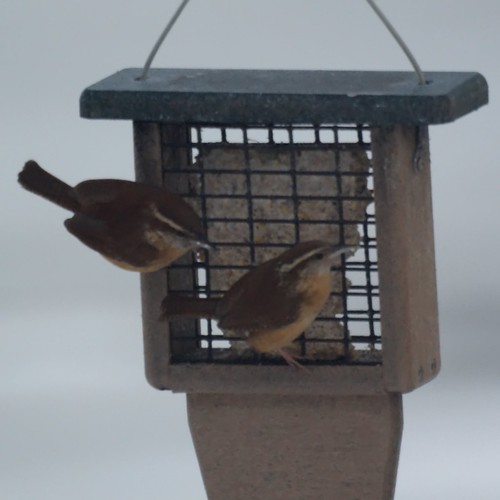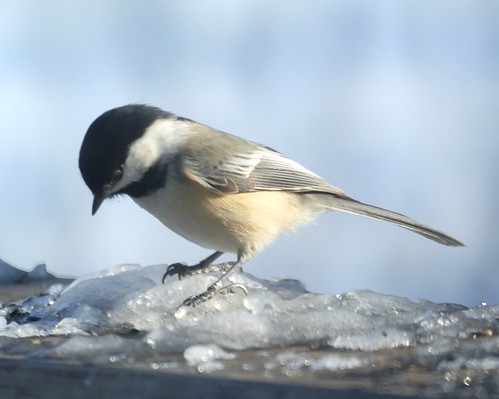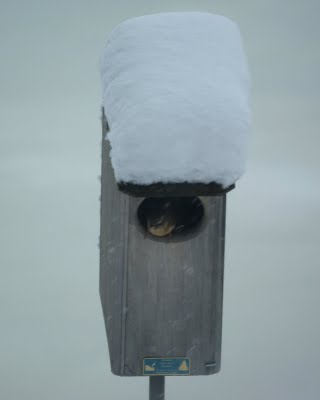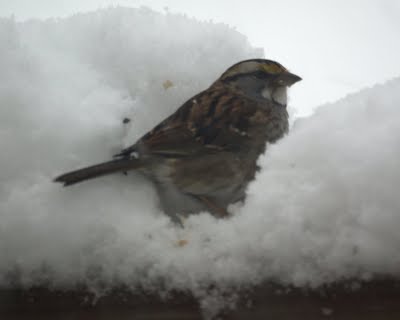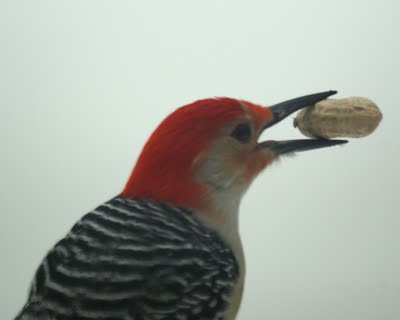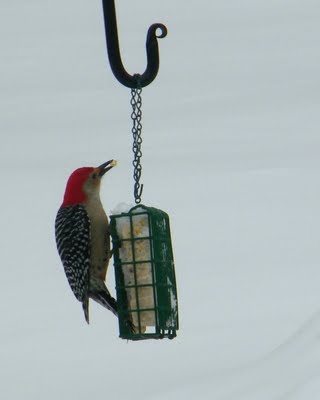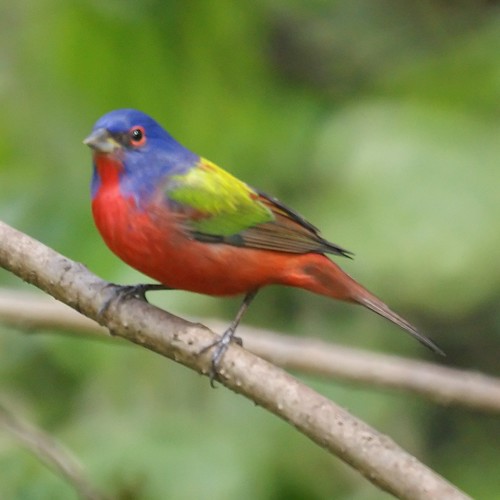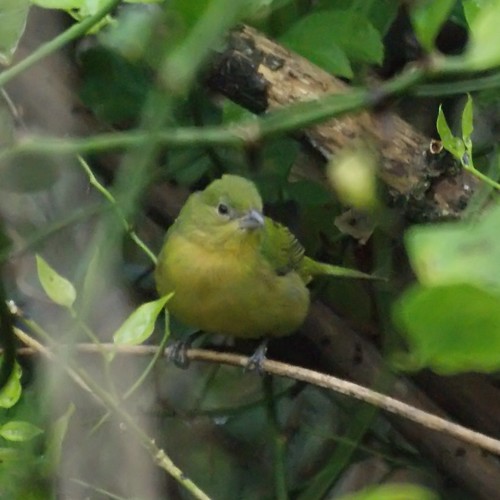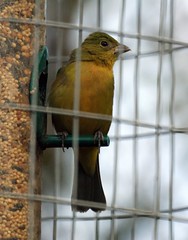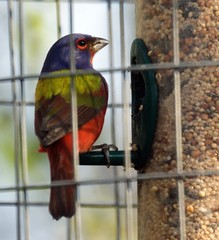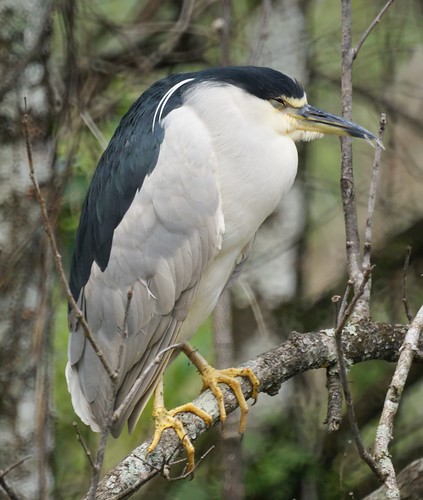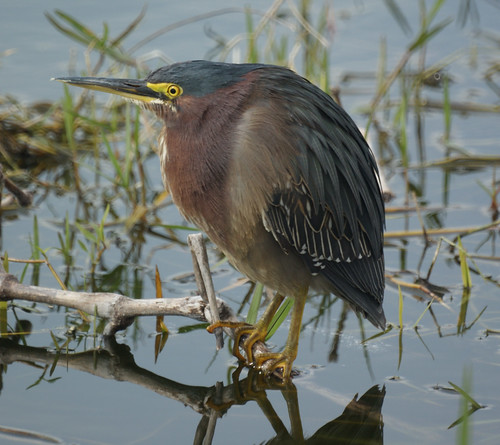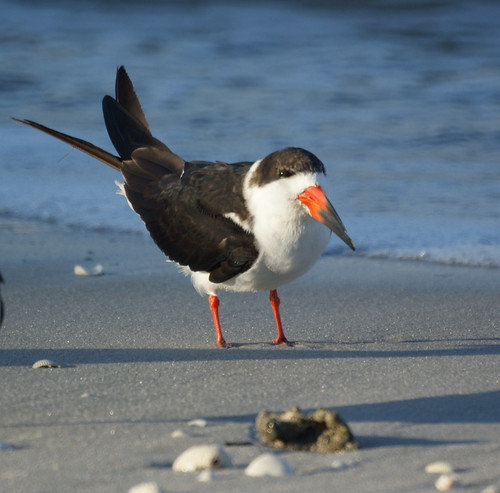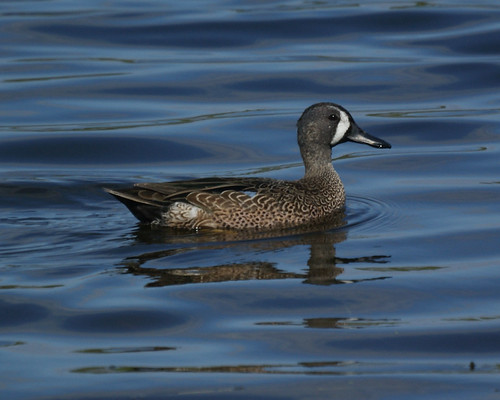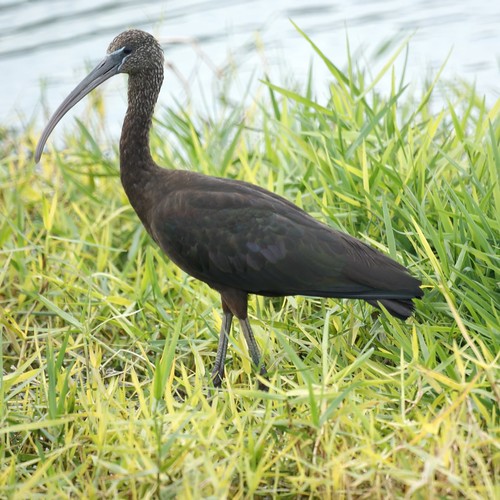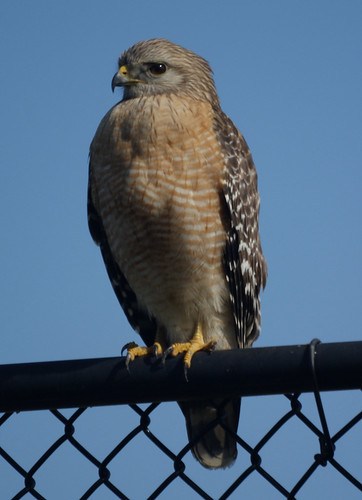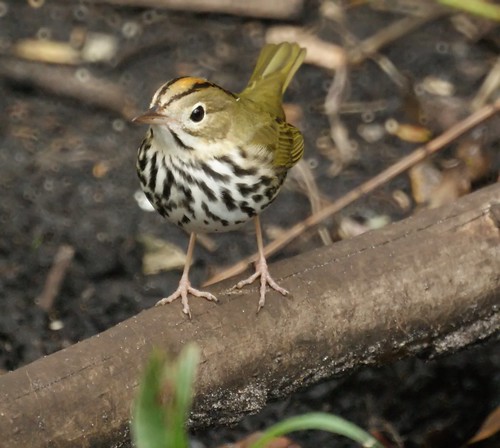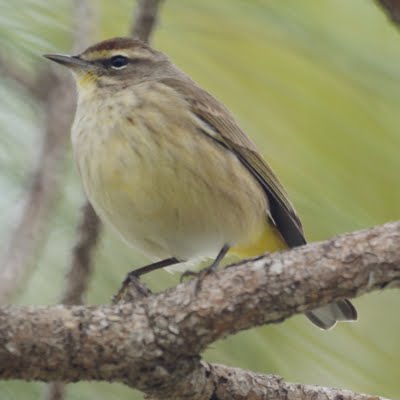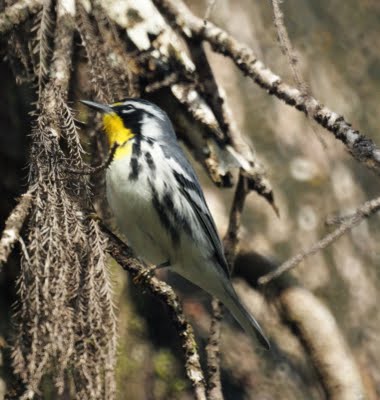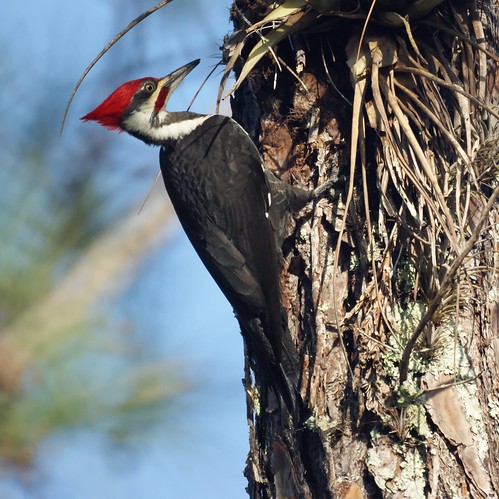
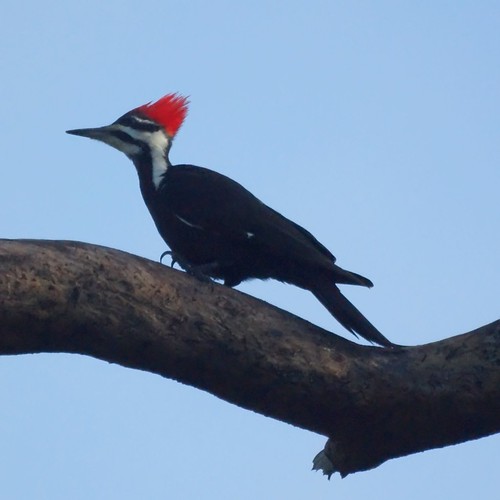
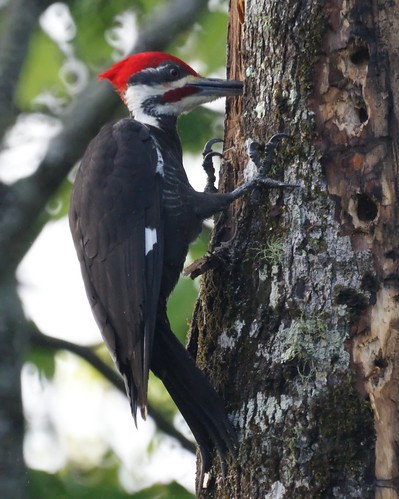
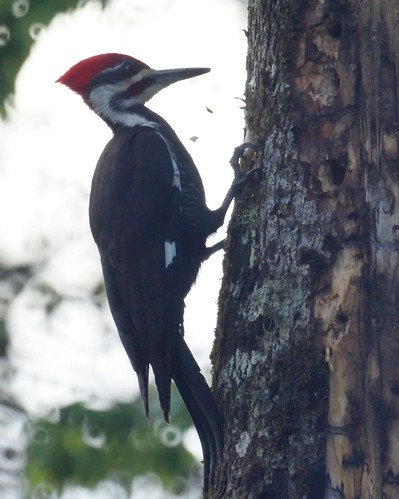

The pileated woodpecker is an amazing bird to watch. We observed one for about 15 minutes (while staking out the painted buntings.) It was the loud tap, tap that got our attention even though our backs were turned to where it was. Later in a different area, there were three making great showings, and they are just as beautiful in flight as they are to watch on the trees. We know we have posted a few too many, but it's hard to choose. The photos are of three different woodpeckers. We think its head looks like a troll doll in the second photo, and you can see the bark and wood chips are flying in the fourth. You can see his tongue in the last.
We'll post more later from Corkscrew, the beach, and another park we visited that is part of the Great Florida Birding Trail.
On a non-bird related topic, although bird watchers do have to eat so maybe it's on topic, we have to give a shout out to
Simply Cupcakes in Naples. What nice people and great cupcakes! We highly recommend stopping in if you're in the area sometime. Last month while in Ft. Lauderdale, we checked out an Oprah favorite and a place we had seen on the Food Channel called We Take the Cake. Well, in our opinion, they don't take the cake at all compared to Simply Cupcakes.
